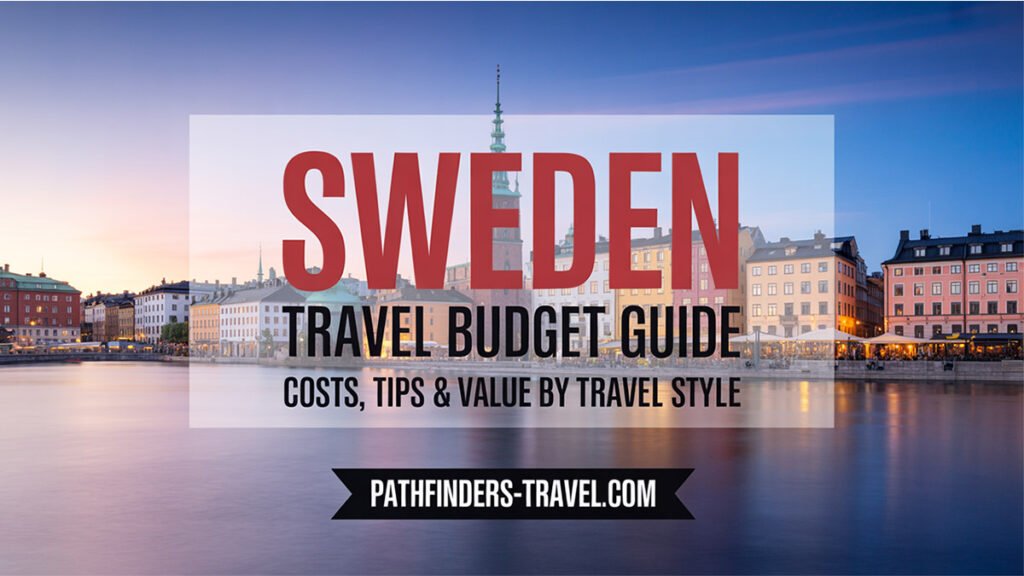Estimated reading time: 14 minutes
Key Takeaways
- A typical Sweden travel budget ranges from $70-80 per day for backpackers to $220+ for luxury travelers, excluding airfare.
- Major expenses include accommodation (250-1,400 SEK per night), food (100-250 SEK per meal), and transportation (40-450 SEK depending on distance).
- Stockholm is generally the most expensive destination, with budget travelers needing $70-115 per day.
- Travel costs vary significantly by season, with summer being the most expensive period to visit Sweden.
- Substantial savings can be made by using public transportation, cooking meals, and taking advantage of free nature activities.
Table of Contents
- Introduction
- Understanding Sweden Travel Expenses
- Budgeting for Major Destinations in Sweden
- Practical Tips for Affordable Sweden Travel
- Cost Breakdown and Budget Ranges
- Frequently Asked Questions about Sweden Travel Costs
- Conclusion
Introduction
Welcome to Sweden: Land of Beauty and History
Sweden stands out as a captivating destination known for its breathtaking landscapes, from Arctic wilderness to the vast Stockholm Archipelago. This Nordic country offers visitors a perfect blend of rich cultural heritage and world-famous historical landmarks like Stockholm’s Gamla Stan and the medieval town of Visby. But for many travelers, understanding the Sweden travel budget is just as important as planning which attractions to visit.
If you’ve been wondering “how much does Sweden cost” for a vacation, you’re not alone. Sweden has a reputation for being expensive, but with proper planning, affordable Sweden travel is absolutely possible. This comprehensive guide breaks down Sweden travel expenses for various travel styles, from budget backpacking to luxury experiences, giving you practical insights to plan your perfect Swedish adventure.
Want to see this for yourself? Click here to watch the video from this point.
Sweden Travel Expenses: Accommodation, Food, and Transport Costs
Core Components of Sweden Travel Expenses
Before planning your Sweden travel budget, it’s essential to understand the main expenses you’ll encounter. Here’s a breakdown of what you can expect to spend during your Swedish adventure:
Accommodation
Accommodation in Sweden ranges widely based on comfort level and location:
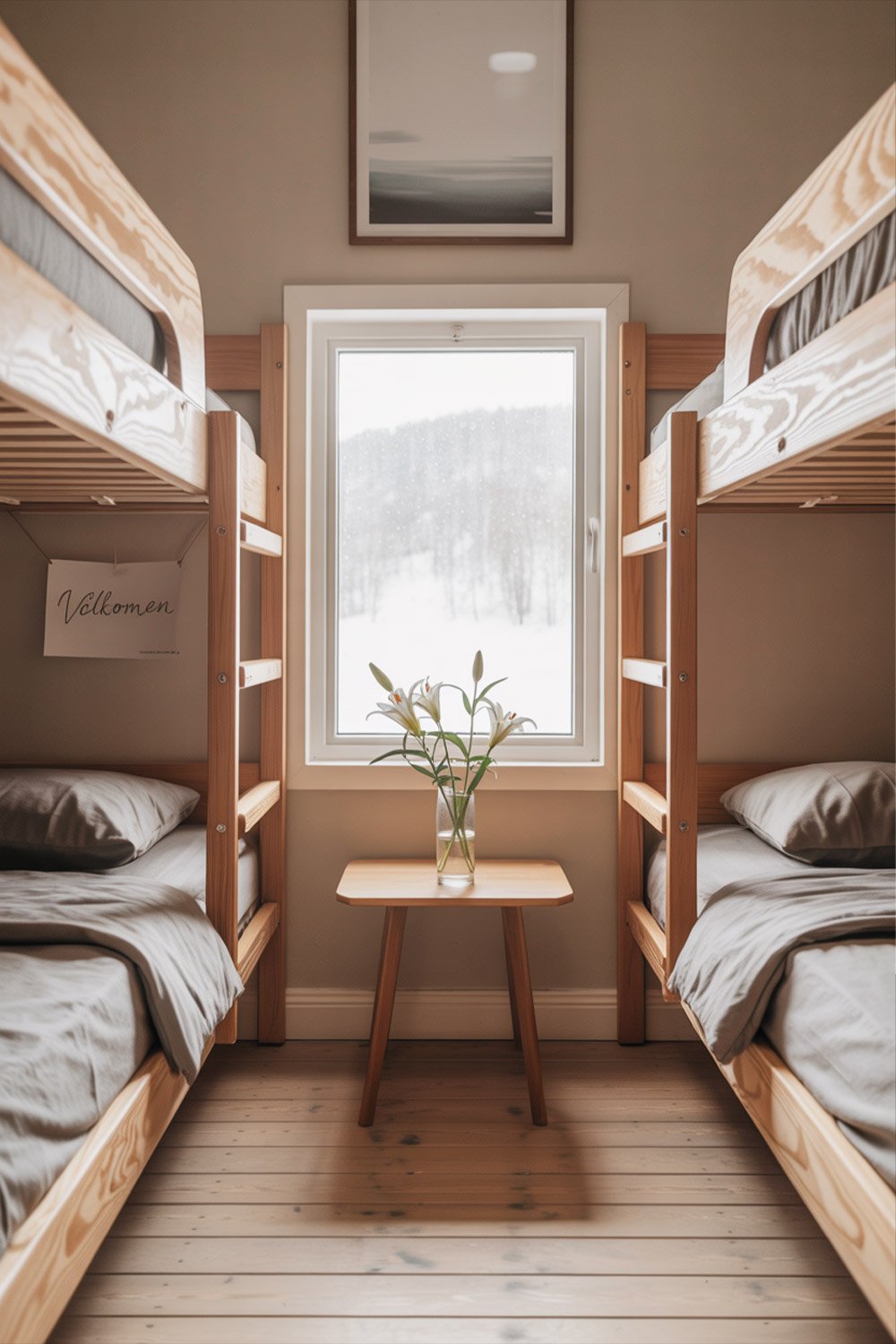
- Budget: Hostel dorm beds average 250-350 SEK ($25-35) per night [SOURCE]
- Mid-range: Private rooms or budget hotels cost 600-1,200 SEK ($60-120) [SOURCE]
- Luxury: Upscale hotels start at 1,400 SEK ($140) and can go much higher
In summer months and in major cities like Stockholm, prices tend to increase significantly due to higher demand.
Dining
Food expenses vary based on where and what you eat:
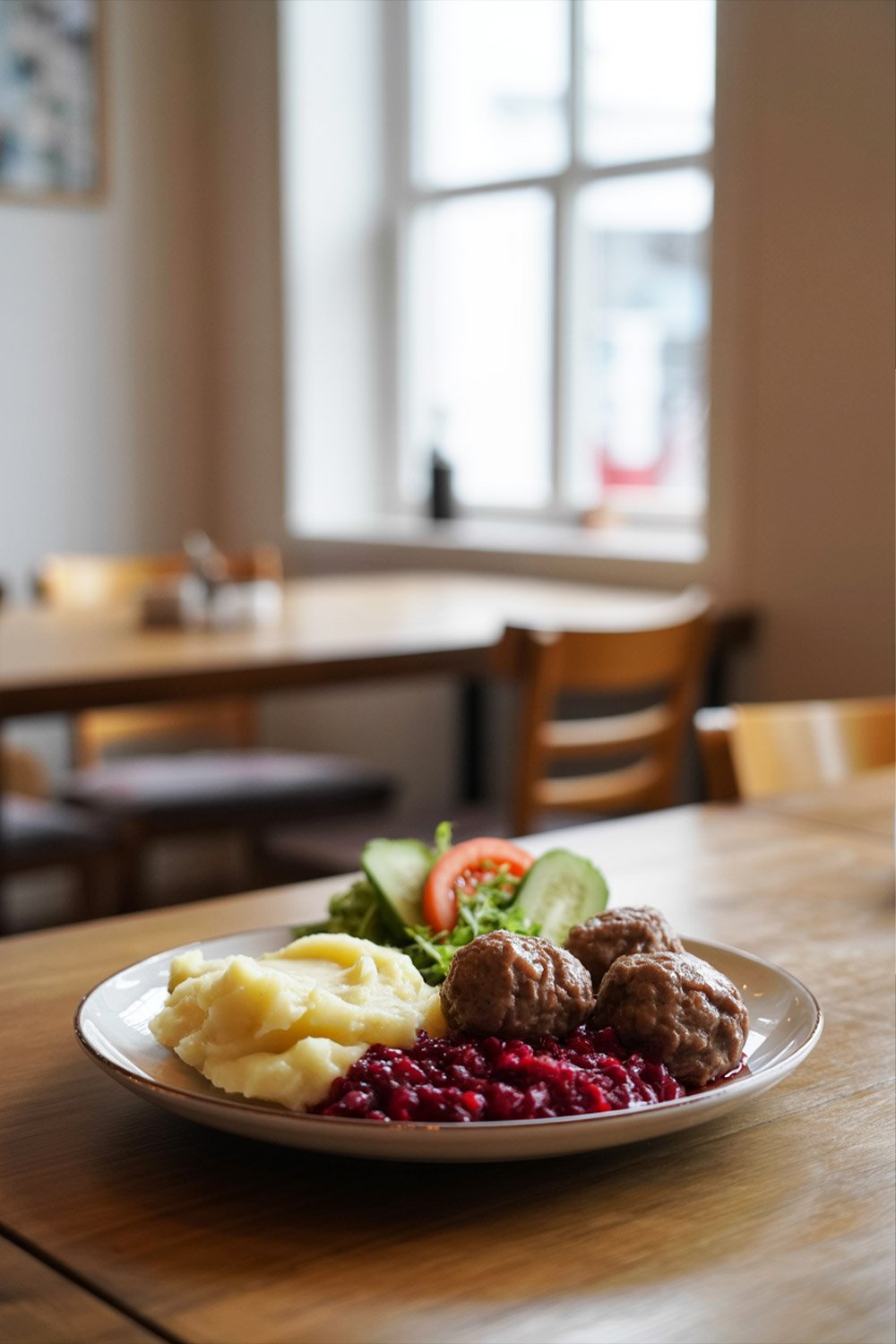
- Self-catering: Shopping at supermarkets costs around 100-140 SEK ($10-14) per day [SOURCE]
- Casual dining: Basic restaurant meals range from 125-250 SEK ($12-25)
- Fine dining: Expect to pay 400 SEK ($40) or more per person
Budget travelers can save significantly by preparing their own meals or taking advantage of daily lunch specials known as “dagens lunch” which are cheaper than dinner options.
Transportation
Getting around Sweden is efficient but can be costly:
- City transport: Single tickets cost about 40-43 SEK ($4) per ride [SOURCE]
- Day passes: 120-180 SEK ($12-18) depending on the city
- Intercity trains: One-way tickets between major cities like Stockholm and Gothenburg range from 200-450 SEK ($20-45)
Booking transportation in advance can often secure better rates, especially for longer journeys.
Attractions & Activities
Sweden offers many free natural attractions, but cultural sites have fees:
- Museums: Entry fees typically range from 100-300 SEK ($10-30) [SOURCE]
- Historic sites: Castle tours and historical landmarks cost 100-200 SEK ($10-20)
- Nature activities: Many parks, hiking trails, and public beaches are free
Factors That Influence Your Sweden Travel Budget
Several key factors can significantly impact how much Sweden costs for your trip:
Seasonality
When you visit makes a big difference to your Sweden travel expenses:
- Summer (June-August): Peak season with highest prices for accommodation and activities
- Spring/Fall: Shoulder seasons offer better value with pleasant weather
- Winter: Generally lower prices except in northern areas during the Northern Lights season
Location
Where you spend your time in Sweden affects your budget:
- Stockholm: The capital is typically the most expensive city
- Gothenburg and Malmö: Slightly less expensive than Stockholm
- Rural areas: Generally more affordable for accommodation and dining
A trip that combines both urban exploration and rural adventures can help balance your Sweden travel budget.
Travel Style
Your personal preferences will significantly impact costs:
- Budget travelers who stay in hostels, cook meals, and use public transportation can explore Sweden relatively affordably
- Mid-range travelers enjoying private rooms and occasional restaurant meals will spend significantly more
- Luxury travelers seeking high-end hotels, fine dining, and private tours should budget accordingly
Sweden Travel Budget by Destination: Stockholm, Cities, and Regions
Stockholm & Surrounding Areas: The Capital Experience
Stockholm, Sweden’s capital, blends historic charm with modern innovation. While it’s the most expensive city in Sweden, there are still ways to enjoy it on various budgets.
Budget Considerations
- Daily cost range: $70-115 per person [SOURCE]
- Free activities: Walking tours of Gamla Stan (Old Town), public viewpoints like Monteliusvägen, and Moderna Museet (free on Fridays)
- Transportation savings: Purchase a 24-hour or 72-hour travel card (180-375 SEK) for unlimited public transport
Stockholm offers numerous budget-friendly options, from hostels in trendy Södermalm to street food markets like Hötorgshallen, making it possible to experience this magnificent city without breaking the bank.
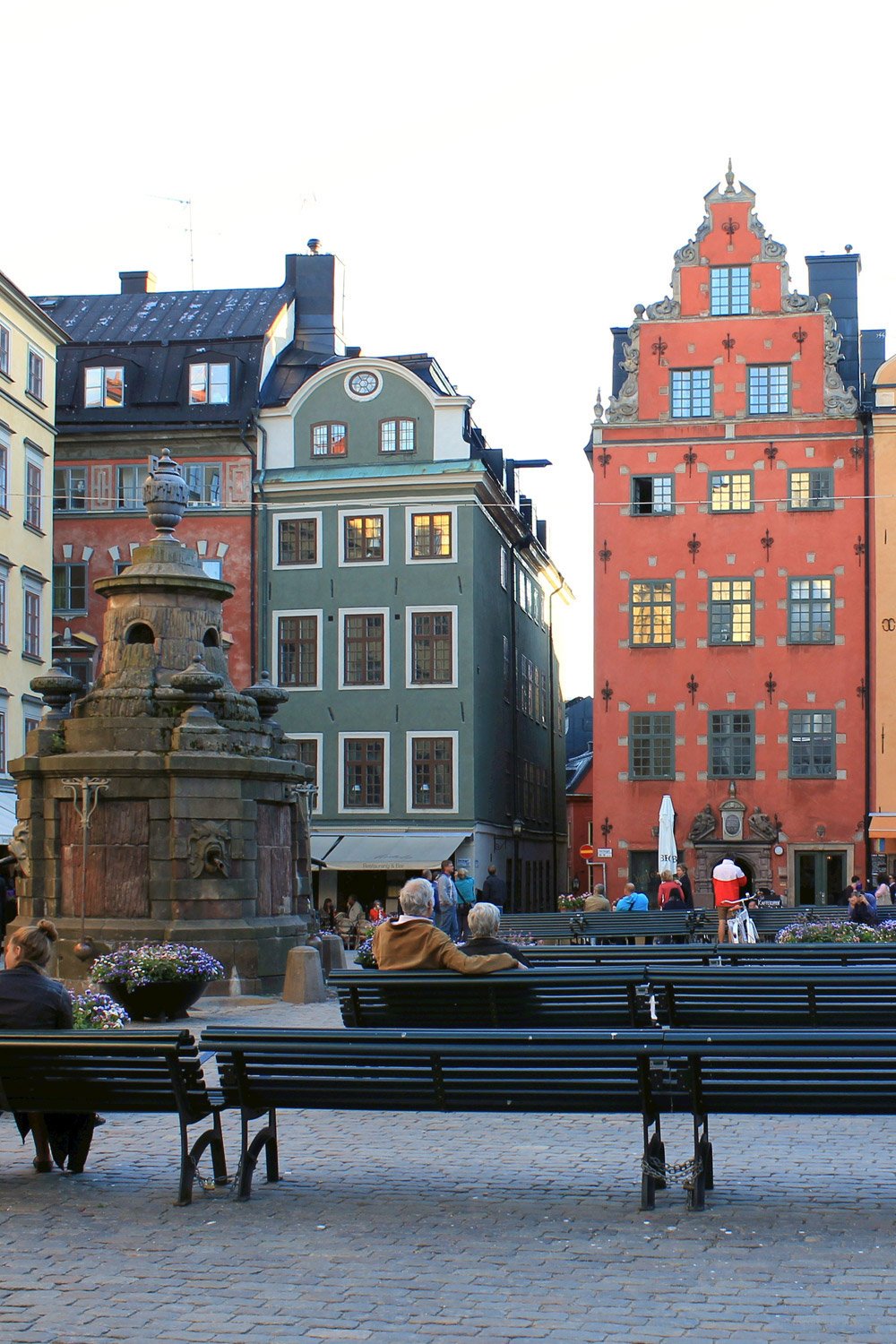
Stockholm Archipelago: Island Adventures
The Stockholm Archipelago with its 30,000+ islands offers a stunning escape from urban life. While visiting these scenic islands can be done affordably, proper planning is essential.

Budget Considerations
- Ferry costs: SL public ferries are included with a Stockholm travel card, while Waxholmsbolaget ferries to further islands cost 50-200 SEK per trip [SOURCE]
- Accommodation: Options range from camping (free or minimal fee) to hostels on larger islands like Sandhamn
- Day trips: Consider day trips to closer islands like Vaxholm to avoid overnight costs
The Stockholm Archipelago becomes more budget-friendly in the shoulder seasons (May and September) when you can still enjoy pleasant weather with fewer tourists and lower prices.
Medieval Towns & Historic Sites: Sweden’s Heritage
Sweden’s medieval towns and historic sites offer a journey through the country’s rich past. Places like Visby on Gotland Island and mainland treasures like Borgholm Castle and Kalmar Castle provide unforgettable historical experiences.
Budget Considerations
- Gotland ferry: Return tickets range from 285-650 SEK depending on season [SOURCE]
- Entry fees: Historic sites typically charge 100-200 SEK per person
- Guided vs. self-guided: Self-guided tours using free maps or apps can save on tour costs
Many of Sweden’s historic attractions offer discounted entries during off-peak hours or combined tickets for multiple sites, providing good value for history enthusiasts.
Southern Cities: Urban Diversity
Southern Swedish cities like Malmö, Lund, Helsingborg, and Gothenburg offer vibrant urban experiences at typically lower prices than Stockholm.
Budget Considerations
- Accommodation: Hostel beds range from 250-400 SEK in these cities [SOURCE]
- Public transport: Day tickets cost approximately 85-120 SEK
- Free activities: University towns like Lund offer many free cultural events
Gothenburg in particular offers excellent value with its efficient tram system, affordable food markets, and numerous free parks and gardens.
Northern Adventures: Arctic Experiences
Northern Sweden offers unforgettable Arctic experiences like the Ice Hotel in Jukkasjärvi, the Northern Lights, and pristine wilderness in Abisko National Park.
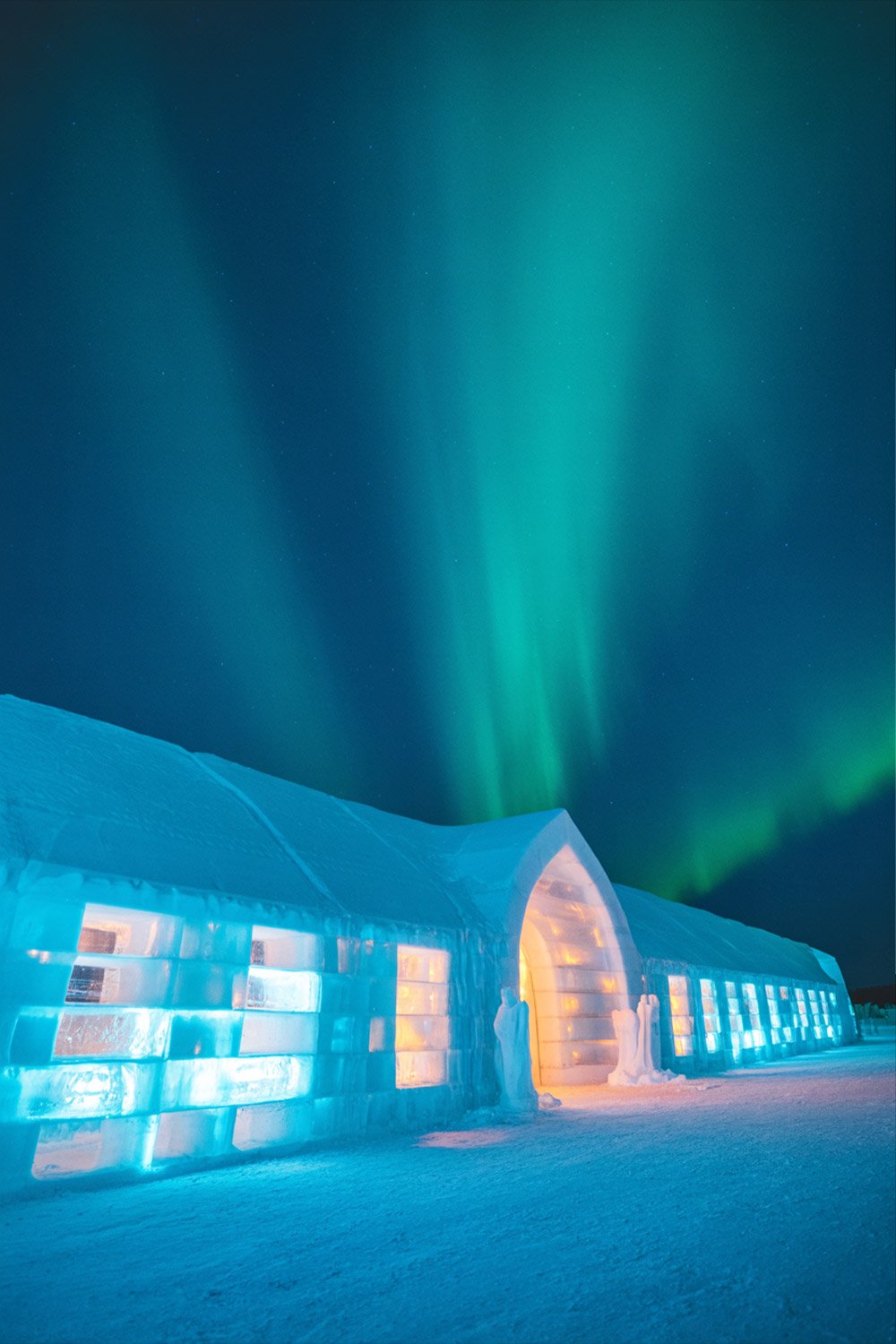
Budget Considerations
- Train costs: Stockholm to Kiruna starts at 500 SEK one-way when booked in advance [SOURCE]
- Seasonal variations: Winter prices spike for Northern Lights viewing and Ice Hotel stays
- Nature activities: Many outdoor activities like hiking in Abisko are free or low-cost
To make the most of your budget in northern Sweden, consider traveling in spring or autumn when you can still experience unique Arctic conditions with significantly lower prices.
h2 id=”practical-tips”>Affordable Sweden Travel Tips: Saving on Transport, Food, and Stays
Smart Transportation Choices
Transportation can be a major expense in Sweden, but with careful planning, you can reduce these costs significantly:
- City cards: In Stockholm, the SL Access card gives unlimited travel from 24 hours to 7 days [SOURCE]
- Advance booking: Train tickets purchased early can be 50-70% cheaper than last-minute fares
- Regional buses: Companies like Flixbus often offer cheaper alternatives to trains for intercity travel
- Cycling: Many Swedish cities have excellent bike-sharing programs at reasonable rates
Walking is also a fantastic option in most Swedish cities, as urban centers are compact and pedestrian-friendly, allowing you to save on transportation while enjoying the local atmosphere.
Accommodation Savings Strategies
Where you stay will likely be your biggest expense, but these strategies can help manage costs:
- Book early: Especially important during summer months when availability is limited [SOURCE]
- Consider location: Staying slightly outside city centers can reduce costs by 20-30%
- Alternative options: Beyond hostels, consider homestays, university dormitories (in summer), or camping
- Longer stays: Weekly rates for apartments through platforms like Airbnb can offer better value than nightly hotel rates
Many Swedish accommodations include breakfast in their rates, which can save you a meal expense each day of your trip.
Dining on a Budget
Food costs in Sweden can add up quickly, but there are numerous ways to enjoy Swedish cuisine without overspending:
- Supermarkets: Chains like ICA, Coop, and Willys offer prepared foods at reasonable prices [SOURCE]
- Lunch specials: “Dagens lunch” (daily lunch) offers restaurant meals at 30-40% less than dinner prices
- Food halls: Places like Östermalmshallen in Stockholm provide various food options under one roof
- Street food: Food trucks and markets offer authentic flavors at lower prices than sit-down restaurants
Don’t forget that tap water in Sweden is excellent quality and free – asking for bottled water in restaurants adds unnecessary expense.
Free and Nature Activities
Sweden offers countless free or low-cost activities that showcase the country’s natural beauty and cultural heritage:

- Allemansrätten: Sweden’s “right to roam” allows free access to most natural areas [SOURCE]
- Free walking tours: Available in most major cities (though tipping is appreciated)
- Public beaches: Sweden has beautiful, clean, and free beaches throughout the country
- Museum free days: Many museums offer free entry on specific days or evenings
Sweden’s stunning national parks like Abisko, Sarek, and Tyresta are completely free to visit and offer some of the most memorable experiences in the country.
Planning Ahead for Savings
Strategic planning can significantly reduce your overall Sweden travel expenses:
- Travel timing: Visiting in shoulder seasons (May-June or September) offers good weather with lower prices
- Travel insurance: While an added expense, it can save you from major costs in case of emergencies
- Tax refunds: Non-EU visitors can claim VAT refunds on purchases over 200 SEK
- Currency considerations: Sweden is largely cashless, but having a credit card without foreign transaction fees is important
Researching events and festivals before your trip can also help you avoid periods with premium pricing or let you take advantage of free cultural activities.
Sweden Travel Budget Breakdown: Daily, Weekly, and Seasonal Ranges
Sweden Travel Budget by Traveler Type
Understanding how costs vary by travel style helps in planning a realistic Sweden travel budget:

Backpacker Budget: $70-80 per day
A basic but comfortable experience includes:
- Accommodation: Hostel dorms or budget guesthouses (250-350 SEK) [SOURCE]
- Food: Self-catering with occasional inexpensive restaurants (150-250 SEK)
- Transportation: Public transit and occasional intercity buses
- Activities: Mostly free attractions with 1-2 paid museums or sites per week
Backpackers can save by taking advantage of hostel kitchens, free walking tours, and city travel cards.
Mid-range Budget: $155-200 per day
A comfortable experience with more amenities:
- Accommodation: Private rooms, budget hotels, or rental apartments (800-1,200 SEK) [SOURCE]
- Food: Mix of self-catering and regular restaurant dining (300-450 SEK)
- Transportation: Public transit, regional trains, and occasional taxis
- Activities: Regular paid attractions and guided tours
Mid-range travelers enjoy a good balance of comfort and value, with occasional splurges on nicer experiences.
Luxury Budget: $220+ per day
A premium experience with top amenities:
- Accommodation: 4-5 star hotels or luxury apartments (1,400+ SEK)
- Food: Fine dining and premium restaurants (500+ SEK per day)
- Transportation: First-class trains, private transfers, and regular taxis
- Activities: Private tours, premium experiences, and exclusive access
Luxury travelers can experience Sweden’s high-end offerings, from Michelin-starred restaurants to exclusive archipelago cruises.
Weekly Budget Estimates
For a typical one-week trip to Sweden, you can expect these approximate total costs per person:
- Backpacker: $490-560 (excluding airfare) [SOURCE]
- Mid-range: $1,085-1,400 (excluding airfare)
- Luxury: $1,540+ (excluding airfare)
These estimates can vary significantly based on your specific destinations within Sweden, the season of travel, and personal preferences.
Regional Cost Variations
Costs can vary considerably depending on where in Sweden you spend most of your time:
- Stockholm: Expect to pay 15-25% more than the national average for most expenses
- Gothenburg & Malmö: Approximately 10-15% less expensive than Stockholm
- Smaller cities: Often 20-30% cheaper than Stockholm for accommodation and dining
- Rural areas: Can offer significant savings, especially on accommodation
Northern Sweden, particularly during winter, can have higher costs due to increased heating expenses and premium prices for unique experiences like the Ice Hotel or Northern Lights tours.
Seasonal Price Fluctuations
When you visit significantly impacts your overall Sweden travel budget:
- Summer (June-August): Peak season with 30-50% higher accommodation rates, especially in coastal areas
- Winter (December-February): Lower prices in most of the country except northern Sweden and during Christmas/New Year
- Spring/Fall: Best value periods with good weather and 20-30% lower prices than summer
For the most affordable Sweden experience, consider a May or September trip when weather is still pleasant but tourist crowds have thinned.
Frequently Asked Questions about Sweden Travel Costs
How much does a daily Sweden travel budget cost?
Daily Sweden travel expenses range from about $80–100 for budget travelers using hostels and public transport, $150–200 for mid-range stays, and $220+ for luxury visitors seeking premium accommodation and dining.
What is the average weekly Sweden travel budget?
A one-week Sweden trip typically costs around $1,260 per person for accommodation, meals, and transport, or roughly $2,520 for two travelers. Prices vary by season and itinerary.
Which budget categories are included in this guide?
This guide explains three categories: Backpacker/budget ($70–80/day), Mid-range ($155–200/day), and Luxury ($220+/day), with details on lodging, food, transport, and activities for each style.
How do Sweden travel expenses compare with other European countries?
Sweden is moderately priced—cheaper than Norway and Iceland but higher than southern Europe. Costs are similar to destinations like Poland or Portugal depending on accommodation and dining choices.
What are the best tips for affordable Sweden travel?
Save money by traveling in spring or autumn, cooking some meals, using travel cards for public transport, staying outside city centers, and enjoying free outdoor activities such as hiking, beaches, and walking tours.
Conclusion
Making the Most of Your Sweden Travel Budget
Sweden may have a reputation as expensive, but by planning carefully, travelers can keep their Sweden travel budget under control. Prioritizing affordable options for food, lodging, and transport makes the country accessible at many price levels.
Many of the most rewarding experiences—like hiking in national parks, exploring medieval towns, or enjoying public beaches—are free or low-cost, helping balance overall Sweden travel expenses. Combining these with selective paid attractions gives the best value.
For those wondering “how much does Sweden cost,” the answer depends on your style, season, and chosen destinations. This guide provides practical strategies so you can align your trip with your budget.
Whether you’re planning a backpacking adventure through the Swedish wilderness, a cultural city tour, or a luxurious Nordic retreat, Sweden offers unforgettable experiences at every price point. The memories you’ll create—from watching the Northern Lights dance across Arctic skies to wandering through medieval cobblestone streets—are truly priceless.
For more travel inspiration and to discover the incredible sights of Sweden and other Nordic countries, visit Pathfinders Travel on YouTube, where you can watch stunning travel documentaries in 4K resolution showcasing the wonders of the world.

